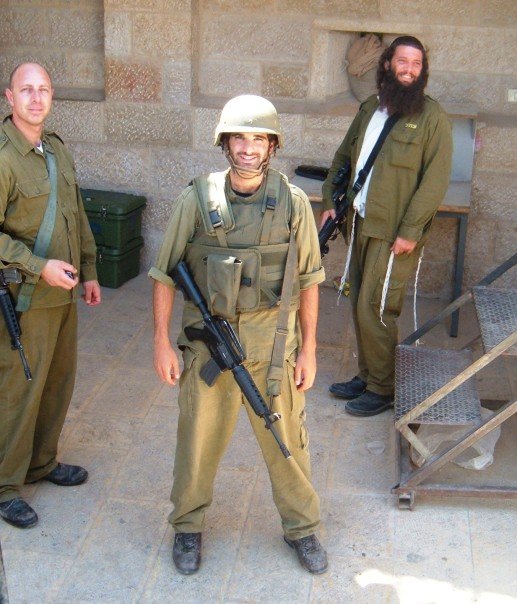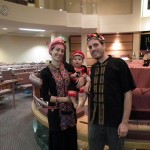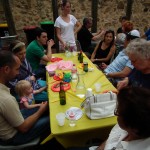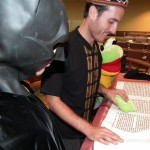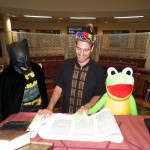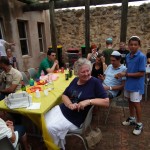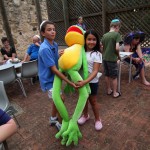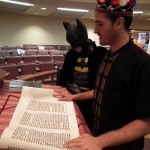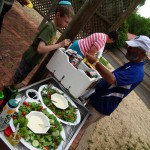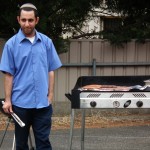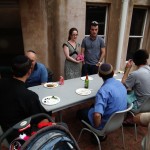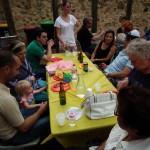Rabbi Scheinberg has recently fallen ill and needs a Refuah Shleimah. We hope that learning his halachos regarding cleaning for Pesach will be a merit for him.
These notes are based on the responsa of Moreinu v’Rabbeinu HaGaon HaRav Chaim Pinchas Scheinberg, Shlita, Rosh Yeshiva Torah Ore, to questions posed by women attending his regular chizuk talks. They have been compiled by a group of his Talmidim.
PREFACE:
In former times, wealthy people who had large houses also had many servants who did their every bidding, while poor people, who could not afford servants, lived in small homes with one or two rooms. Understandably, the pre-Pessach chores of the rich were performed by the servants, while the poor, who had only their one or two rooms to clean, a few pieces of furniture, a minimum of utensils, and some clothing, took care of their needs themselves. In those days, the cleaning was hard. Tables were made of raw wood, requiring them to be scrubbed or even to be shaven to ensure that no pieces of food were hidden in the cracks. Earthen or wooden floors also needed to be thoroughly cleaned and scrubbed.
Today, we seem to be caught in a trap. The average modern home is larger than formerly. Furniture, utensils and clothing are much more plentiful. The average home today could compare with the more affluent homes of previous generations. However, we do not have the servants that they had, so that, today, all the chores fall on the housewife. At the same time, she feels obligated to clean and scrub as they did formerly, even though she has laminated furniture and tiled floors, making this type of cleaning unnecessary.
As a result of this, the pressure of pre-Pessach cleaning has reached unnecessary and overwhelming levels. The housewife often becomes overly nervous, unable to enjoy the Simchas Yom Tov of Pessach and unable to perform the mitzvahs and obligations of the Seder night.
INTRODUCTION:
Pessach, like every other Yom Tov, must be enjoyed by every member of the family, including women. This is an obligation clearly defined in the Torah as explained by Chazal zt”l. We can understand a person dreading Tisha B’Av but Pessach is to be looked forward to and anticipated with joy. Every woman should be well rested, relaxed, and alert at the Seder table so that she can fulfill all the Torah and Rabbinical obligations and follow the Hagadah with the rest of the family. Clearly, the performance of her pre-Pessach duties must be balanced against her Pessach obligations.
Pre-Pessach cleaning is required to avoid the danger of transgressing any Torah or Rabbinical prohibition of having chometz in the house on Pessach. It is evident from the responsa of the Rosh HaYeshiva, shlita, that this need not be excessive.
It is not the intention here to abolish Minhagim which have been passed down by Klal Yisroel from generation to generation. Nevertheless, some practices adopted by women in the Pessach cleaning today, are not an actual continuation of the old Minhagim. For example, if a person does not sell his chometz, of course it is necessary to check his utensils and to wash off any chometz left on them, or render the chometz inedible. But, if the chometz is sold, then washing the pots and pans and dishes which are going to be locked away is not necessary. One might be tempted to insist on doing the extra work anyway-to be “machmir” (stringent). However, in these stringency’s lies the grave danger of causing many laxities and brushing aside many mitzvahs completely, Torah and Rabbinical obligations which women are required to do on Pessach and particularly during the Seder. Many women like to do more “cleaning” than the bare minimum, to such an extent, that some even incorporate their general “spring cleaning” into the required Pre-Pessach chores. These extra exertions should not prevent them from fulfilling their obligations on Pessach, and particularly, on the Seder night.
GENERAL NOTES:
A. All property and possessions must be cleaned and checked to make sure that they are free of all chometz, except in the following cases:
B. If, during the year, chometz is not brought into a place, that place does not have to be cleaned out or checked for chometz.
C. Any article which is not used on Pessach does not need to be checked for chometz provided it is put away properly and the chometz is sold.
D. Crumbs which have been rendered completely inedible to the extent that they are not fit to be eaten by a dog are not considered chometz.
E. The general obligation to check for and destroy crumbs does not apply if the crumbs are less than the size of an olive (kezayis) and are dirty or spoiled enough to prevent a person from eating them.
F. The household cleaner mentioned below must spoil the crumbs slightly to the extent that people would refrain from eating them.
PRACTICAL APPLICATIONS:
1. CLOTHING CLOSETS: If there is some significant possibility that chometz went into them, they should be checked for fully edible crumbs of chometz, besides large pieces of chometz foods. If the probability that chometz entered these places is remote, a Rav can be consulted to clarify the conditions under which they do not have to be checked. This includes chests, dressers, basements, and all other similar cases (See General Note E).
2. FLOORS: In our times we don’t have earthen floors with deep cracks in them. It is sufficient for tiled or covered floors to be swept and washed with a household floor cleaner. The small cracks do not have to be checked if the cleaning solution reaches into them.
3. FOOD CABINETS: If the cabinet is not going to be used on Pessach see General Notes C & E above. If the cabinet is going to be used on Pessach, take out all of the food, and wash it with a rag soaked in a household cleaner. Be sure the cleansing agent reaches into all the cracks and soaks into any crumbs that might be left there. The usual practice is to line the cabinets.
4. REFRIGERATOR: Take the food out, and wash it with a rag soaked in a household cleaner. The racks are usually covered. (It is advisable to leave holes for air circulation.)
5. KASHERING SINKS: Clean the sinks, and pour a kettle of boiling water into them and on their sides. Some people pour hot water mixed with bleach down the drain. The usual practice today is to line the sinks (e.g. aluminum foil, contact paper) or to use an insert—if not difficult, this practice should be followed.
6. FAUCETS (TAPS): Cleaning, without any other kashering procedure, is sufficient.
7. MARBLE AND STAINLESS STEEL COUNTERS: If they were used for hot chometz they should first be cleaned well. Then either boiling hot water should be poured on them, or they should be completely covered so that nothing Pesach’dik touches them. Some people do both.
8. TABLETOPS: Wash them with a household cleaner. The usual practice is to cover the tables.
9. KASHERING RANGE/OVEN/STOVE-TOP: Wash the top and side surface areas with a rag soaked in a household cleaner. Some people cover it with aluminum foil. Old grates can be kashered by first cleaning them and then lighting all the burners, raising them to their maximum heat, and preferably putting on a “blech” while the burners are on. This spreads the heat over the whole top and intensifies the heat on the grates. Let it burn for 5-10 minutes.
OVEN: If the oven is going to be used:
(A) Wash out any edible chometz with a rag soaked in a household cleaner. If you suspect that there are any inaccessible crumbs or particles of chometz, then clean the oven with any of the regular oven-cleaners (e.g. Easy-Off). (After using the oven-cleaner, there is no need for further cleaning). Then heat the inside of the oven by turning the oven on the highest temperature for about one hour. (On electric ovens it should be determined whether the highest temperature is on “roasting” or “broil” (“Grill”). However, if a closed oven insert for baking and roasting is available, this would be preferable. In this case, only washing and cleaning are necessary.
(B) Do not use the chometz-dik oven racks for Pessach. If this is too difficult, then one can kasher the racks with the same procedure as for the oven.
(C) Chometz-dik baking and roasting pans should not be used for Pessach. In a case of extreme difficulty, where one can not obtain Pessach-dik pans, the procedure for kashering an oven (see (A) above) may be used on the pans if they have not been used for 24 hours. However, care must be taken to clean any chometz which may be embedded under the lip or rim, etc. If the oven is not going to be used: None of the above is necessary. Just make certain that there is no edible chometz inside, tape it closed well and see below #10.
10. POTS, PANS, DISHES, & SILVERWARE (CUTLERY): Whatever is not going to be used for Pessach should either be locked up, or put away and sealed in a manner which will remind you not to use them on Pessach. If there is a possibility of actual chometz in them, the chometz should be sold (See Gen. Note C.). If you do not sell chometz, then they should either be washed or soaked in a household cleaner; it is not necessary to scrub them. (Concerning Kashering utensils for Pessach consult a Rav.)
11. FOOD PROCESSOR/MIXER: A Rav should be consulted.
12. DISH TOWELS: If one does not have a Pesach’dik set of dish towels, then one’s regular dish towels may be used if they are washed with detergent and no food remains attached to them. (It is customary to have a set of Pesach’dik dish towels).
13. PESACH TABLECLOTHS: These can be ironed with the same iron as is used during the rest of the year.
14. CLOTHES, BLANKETS, POCKETS, ETC.: If they have been washed in detergent or dry cleaned, then there is no need for them to be checked (see General Note E). Otherwise, they need to be cleaned and checked thoroughly by brushing or shaking them out well. However, if there is a possibility of crumbs between the stitches or in a hidden crevice which cannot be shaken out, then they must be wiped with a rag which has been soaked in a detergent. Clothes which will not be worn on Pessach do not have to be checked, but they should be put away and the chometz in them sold ( see General Note C. And Sec. 10 on Pots and Pans).
15. SIDDURIM, BENCHERS, SEFORIM, & BOOKS: If there is a chance that they contain chometz crumbs, then they should either be put away and sold with the other chometz utensils (See General Notes C.), or cleaned and checked well.
16. TOYS: If there is edible chometz, then it should either be removed, or rendered inedible (See General Notes E). There is no need to scrub them.
17. TECHINA AND OTHER KITNIYUS: May be used after the house has been cleaned for Pessach. They should not be cooked in utensils that will be used on Pessach, and certainly not on Pessach itself ( according to the Askenaz Minhag).
18. CHECKING THE ROOMS: If it is too difficult to check all the rooms on one night, then the work may be divided and done on other nights (according to all the Laws of Bedikas Chometz). No chometz should be left in any room that has been cleaned and checked properly. Since the brocha is not recited before the night of the l4th, therefore, at least one place that has chometz should be left unchecked. Then, the mitzvah of Bedikas Chometz can be performed with a brocha on the night of the 14th on that area. If the whole house has already been completely cleaned before the l4th, then the l0 pieces of chometz (according to the Minhag) should be hidden by somebody else so that proper bedikah can be made.
19. FOOD THAT FALLS onto a chair or onto the floor on Pessach should be washed off for hygienic reasons. The food does not become chometz even if the food is hot.
20. LAST MINUTE PREPARATIONS: For example, setting the table, etc., should be completed early enough in the day, so that you will be able to rest a little bit. Be ready to start the Seder immediately after Maariv, to ensure that the children won’t fall asleep at the Seder.
21. ENJOY PESACH! Try to make the Pessach chores easy for yourself. Don’t do unnecessary hard work. Don’t do unnecessary cleaning. YOU can be like a Queen and you must enjoy Pessach.
BASIC LAWS OF THE SEDER
INTRODUCTION:
Some women have a habit of taking a bite of matzo, then running back and forth to the kitchen taking a few more bites in between. In this way, it takes them too long to eat the matzo, and they do not fulfill the mitzvah properly. The same is true about the wine, maror, korech, and afikomen. Therefore, do not leave the table until you have finished eating the required amount. Sit like a Queen! Relax and be calm while eating and drinking the matzo and wine within the time limit. The cooking can be checked after completing the mitzvahs. Remember..these are mitzvahs that can be done only once a year, so enjoy them and enjoy the whole Seder.
There are many laws about which there exist numerous opinions. It is beyond the scope of this pamphlet to encompass all of the opinions. Many people choose to be more stringent on various issues. Much can be written about each and every detail. The laws contained herein are the basic requirements to fulfill the Halachic obligations. If this is difficult, a Halachic authority should be consulted.
MATZOH AND MAROR:
SIZE: The size of a kezayis is a measurement in volume equal to the volume of half an egg. There is a difference of opinion if our eggs are smaller than those at the time of the Talmud. According to the Chazon Ish zt’l the size of kezayis d’oraisa is 45-50 cc. And according to the Hagaon Harav A. Chaim No’eh zt’l it is 25.6-28.8 cc. According to the Mishna Brura for a Mitzvah d’Oraisa we should measure according to the larger shiur (size) and for a Mitzvah d’Rabbonon it is permissible to rely on the smaller shiur.
It is very hard to give an exact standard shiur for the amount of hand matzo that one has to eat for a kezayis d’Oraisa and a kezayis d’rabbonon; therefore a Rav should be consulted. However, one can rely on the fact that by breaking the matzo into small pieces an then filling up one’s mouth with as much as possible (remaining relaxed) leaving minimal room for chewing afterwards, one will have eaten enough to fulfill one’s obligation of the Mitzvah of eating Motzei Matzo.
It should be noted that:
1. Hand matzo should be used for Motzei Matzo, Korech, and afikomen. If this is impossible then a Rav should be consulted.
2. Korech is a Mitzvah d’Rabbonon and requires a kezayis of matzo and a kezayis of maror.
3. Elderly people or those unable to meet these requirements should consult a Rav.
4. Afikomen is a Mitzvah d’Rabbonon and requires a kezayis of matzo. It would be preferable to eat 2 kezaysim.
TIME LIMIT:
1. If possible it is preferable to try and swallow one kezayis at one time. Otherwise, it is preferable that the kezayis for the Mitzvah d’Oraisa of Matzo should be eaten within two minutes, or at least four minutes.
2. 5-6 minutes is acceptable by some Rabbinical authorities.
3. Relax, chew well and then begin swallowing. The time limit starts from when you begin swallowing.
4. Under very exceptional circumstances, 9 minutes is also acceptable.
5. If one encounters difficulty, a small amount of water may be sipped while chewing.
THE FOUR CUPS:
WHAT TO DRINK:
1. Red wine is preferable.
2. If one cannot drink wine he may use grape juice.
3. Those allergic to wine and to grape juice may use a “Chamer Medina”, for example tea and coffee.
SIZE: 1. The cup used must contain at least a revi’is.
To avoid drowsiness: (a) use a cup that does not exceed a minimum shiur (size). (When the Seder falls out on Friday night, a larger shiur or revi’is should be used for the First Cup. (B) One may drink a glass of water immediately after swallowing the wine. (The water should be on the table at the time that one says the brocha of Borei Pri Hagafen so that the water is included in the brocha on the wine.
2. Preferably, one should drink the entire cup.
3. If this is very difficult, then drinking most of the cup is sufficient.
Under exceptional conditions, drinking most of the revi’is is acceptable, even if the cup is much larger than a revi’is.
TIME LIMIT: Preferably, two swallows. If this is difficult then up to 4 minutes is acceptable. If necessary 5 or 6 minutes is also acceptable by some Poskim.
HAGADAH: The proper time for starting the Seder is right after tzeis hakochovim. Upon arriving home from Maariv one should start the Seder promptly in order that the children should not fall asleep before eating the Matzo and Maror and the meal. Therefore, one should say the Hagadah as quickly as possible, and save the commentaries for later on.
LEANING: The mitzvah of “Hasaivah”, is to give one a feeling of freedom; one must lean on the left side, however, one should not lean in an uncomfortable manner. The Minhag is that women do not lean.
Read More



